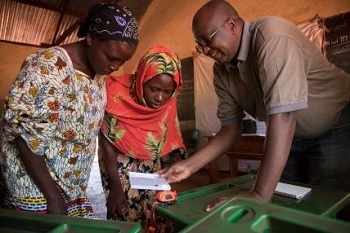|
|
GIA Launches Gem Guide for Artisanal Miners
Apr 5, 2017 3:48 AM
By Rapaport News
|
|
|
RAPAPORT... The Gemological Institute of America (GIA) is piloting a free
gemology guide for artisanal miners in producing countries.

The aim is to offer basic gemological and market knowledge in
regions where gem-mining takes place, the institute said Tuesday. The GIA has
distributed the illustrated booklet – available in English and Tanzanian
Swahili – to approximately 45 women miners in Tanzania’s Tanga region at no
cost.
“We are moving practical gemstone education as far up the
supply chain as possible, to people who can benefit tremendously from greater
understanding of the beautiful gems they bring to market,” said Susan Jacques,
the GIA’s CEO.
A team of GIA staff worked on the guide in consultation with
colored-gemstone experts who have extensive experience buying gems in rural
areas. The original idea came from James Shigley, a distinguished research
fellow at the laboratory.
The pilot project, which the institute carried out in
partnership with international development organization Pact, cost $120,000,
all of which the GIA paid from its endowment fund.
In January, seven members of the institute and Pact traveled
to the Tanga region to conduct free training with the booklet for about 45 members
of the Tanzanian Association of Women Miners (TAWOMA).
Artisanal and small-scale mining accounts for about 80% of
global sapphire, 20% of gold mining and up to 20% of diamond extraction,
according to the World Bank. Last month,
an artisanal miner in Sierra Leone discovered a 709.48-carat rough diamond,
which is set to go on sale by international tender this week.
Image: Robert Weldon © GIA
|
|
|
|
|
|
|
|
|
|
Tags:
artisanal mining, Gemological Institute of America, gemology, GIA, gold, James Shigley, Laboratories, mining, Rapaport News, Rough Diamonds, sapphire, Susan Jacques, Tanga, tanzania, Tanzanian Association of Women Miners, Tanzanian Swahili, TAWOMA, World Bank
|
|
|
|
|
|
|
|
|
|
|

|
|